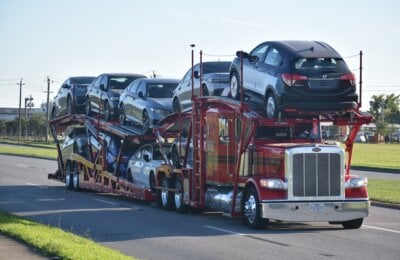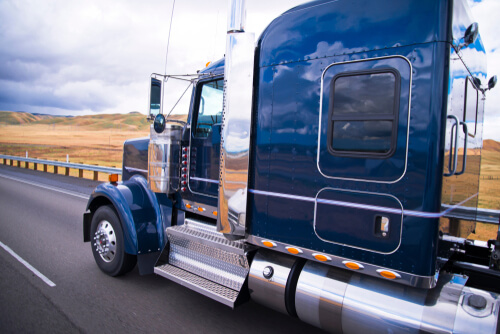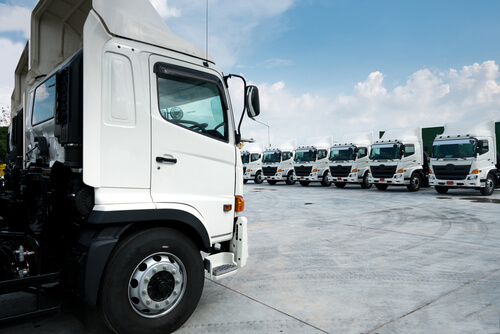
Reading Time: 4 minutes
Like cars, trucks come in different shapes and sizes. Different trucks are customized to handle versatile roads. Are you thinking about joining the road freight industry? You will have to consider which specific types of jobs you want to handle. Following this buy the appropriate shipping truck for your purpose. Unless, of course, you have the capital to buy several different types of trucks to handle different job types.
In this article, we will cover a variety of factors that pertain to shipping trucks and transporting trucks. Our information is based on our nearly two decades auto transportation industry experience.

Looking for more in-depth insights on vehicle shipping? Visit our comprehensive blog post on Vehicle Shipping Tips. Here, you’ll find expert advice and advanced strategies to ensure your vehicle’s shipping process is as smooth and stress-free as possible. Whether you’re a first-timer or a seasoned pro in auto transportation, our blog has something valuable for everyone.
Types of Shipping Trucks
Some of the most common types of shipping trucks include:
- Box trucks – Otherwise known as cube trucks, box trucks are smaller in size and closed off around the sides and top. These vehicles are used by courier firms and families with small household relocations. Easily handled, box trucks don’t have stringent license requirements. In fact, you can rent one from U-Haul and other companies to facilitate your household move.
- Liftgate trucks – These trucks are equipped with a mechanic or hydraulic lift bed that collects heavy loads from the ground and places it inside the truck. This can be used for all types of items that require shipping by truck.
- Semi-trailer trucks – Another widely used truck, the semi-trailer has collapsible sides, roof and back to easily load and offload stacks of goods to be transported.
- Jumbo trailer trucks – You will often see these trucks on the roads, as they are widely used in the logistics arena. Jumbo trailer trucks are actually pretty lightweight and spacious, but they have a large capacity for large loads. The sides, top and back are also collapsible for easy loading.
- Refrigerated trucks – If you’re shipping perishables or items that are affected by temperature fluctuations, a refrigerated truck is the way to go. Some are temperature controlled, while others offer freezing.
- Flatbeds – Apart from the driver’s cabin, the rest of the truck is open. They can be customized to cater to the type of anticipated load, such as pipes, wood, or cars. Some truckers would place a shipping container on truck. These trucks typically handle loads of 48,000 pounds, and can essentially be used for shipping trucks from point A to point B.
Shipping Truck: What’s an 18-wheeler?
An eighteen-wheeler is a truck with eighteen wheels across five axles. Popular brand names for eighteen wheelers include Western Star, Mack, Volvo, Kenworth, Freightliner, and Peterbilt. When a truck does not have a trailer attached, it is known as bobtailing, dangerous practice in wet weather.
The average eighteen wheeler measures 13 ‘6 “ in height, and can have 9, 10, 13, 15 or 18 gears. However, the typical eighteen-wheeler has ten forward and two reverse gears.
Since eighteen wheelers can carry large loads, it is a popular investment for individuals wanting to enter the shipping truck industry. The cab of a new eighteen wheeler costs somewhere between $130,000 to $180,000, with new trailers ranging between $30,000 and $80,000.
Driving an eighteen wheeler is no mean feat. It’s quite different to driving a car, and that’s also why truck drivers often leave their trucks idling.

- It takes an eighteen wheeler 40% longer to stop than a normal car, and the load will further affect the time to stop.
- Drivers use the double-clutch technique to shift gears, which is vastly different to a car with a standard transmission.
- RPMs don’t match up in a truck as they do in a car. Truckers depress the clutch twice to match the RPMs to the gears.
- Truckers use the floating – an acquired skill – whereby they only use the clutch to start and stop.
- Jack-knifing accidents are common, when the trailer wheels skid and move faster than the cab and causes the trailer to exceed a 45 degree angle.
Shipping a Truck Across the Nation
At Nationwide Auto Transportation, we ship all types of autos, including sedans, hatchbacks, AWD cars, boats, motorcycles and more. Shipping trucks is not unusual for us.
If you’re buying a truck and need it transported from the seller to your premises, you can expect to pay around $1 per mile for shorter trips, and around $.75 cents for trips exceeding 1,000 miles. Of course, the cost of shipping trucks will vary based on seasonal demand, modifications, weight, height and vehicle size. If your truck doesn’t run, it will cost more as a lift kit will have to be used.
Shipping a truck is different from shipping a car – even if it’s simply a cowboy Cadillac. The reason being that trucks are bigger than cars. Sometimes, we can ship a truck like the average car or SUV on a ten-car carrier, but motor homes or vans can weigh five times as much as your typical sedan. They will require special handling and therefore fetch a higher shipping cost. But whether you have a pickup truck, vintage truck, service or utility rig, dump or tow truck, box truck or flatbed, fire engine, semi, or a flatbed, speak to NAT today about



